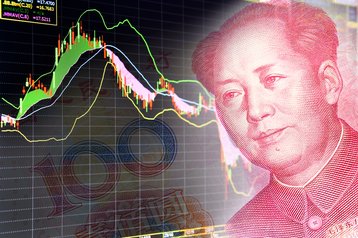The Shenzhen Stock Exchange, China’s biggest stock market by volume, has moved into a new data center and increased its order processing capacity with an order-matching engine.
The new data center comes with 5,000 server cabinets for colocation, which allows brokers to put their servers in the same spot as the exchange’s machines.
Putting stock in the change
“It makes sense for Shenzhen to upgrade its systems regularly because its volume is growing rapidly,” Hong Kong-based Core-Pacific Yamaichi analyst Castor Pang told Bloomberg.
“Exchanges around the world all update their systems regularly to lower maintenance costs.”
With an average daily turnover of around $50 billion, and an upcoming stock link with Hong Kong, Shenzhen is experiencing a priod of rapid growth. However, with equity markets in China only officially established in 1990, the systems are still behind those in the US.
The new order-matching engine has a response time of 1.1 milliseconds, which is one-hundredth of the previous system, with order processing capacity tripled to 300,000 trades a second. By comparison, Japan’s Osaka Exchange was this week updated to process orders in about 100 microseconds.
Speed has become increasingly important for high-frequency trading (HFT) - complex algorithmic trading that analyzes multiple markets and executes orders based on market conditions.
David Snowdon, CTO of Metamako, told Bloomberg that many HFT firms have a response time of less than 1 microsecond, one thousandth of the time of the Shenzhen upgrade.
But China has not rushed to embrace HFT, concerned about high-speed automatic stock trades that can potentially cause wild swings in the market.
During a six minute window on 15 October 2014, a confluence of events exacerbated by HFT ‘algobots’ caused the US Treasury yields to drop heavily and then rise. The Treasury said that HFT and other changes could lead to more “rare but severe bouts of volatility,” and the European Central Bank has criticized the practice.
While some countries have nonetheless embraced HFT, which is seen as cheaper, faster, more intelligent and more efficient, China’s approach has been cautious at best.
Late last year, The China Securities Regulatory Commission published draft rules that outlined information that HFT firms would have to provide when considering transactions. The strategies would have to then be approved before they could be enacted.
After industry criticism, it is thought the rules are now on hold.

